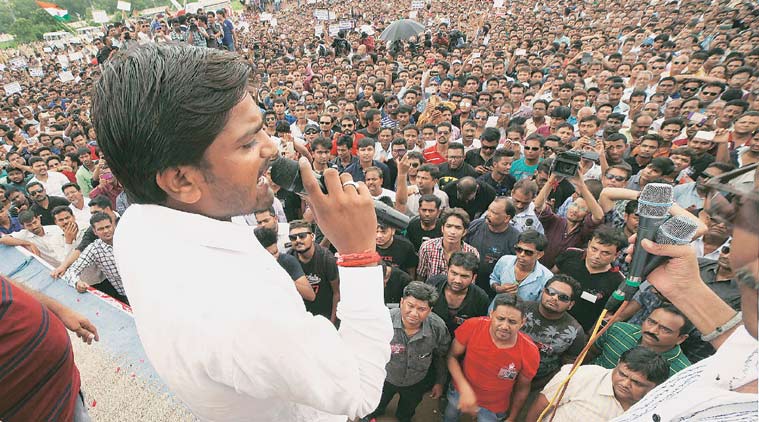In August – September 2015, when Gujarat was boiling under Patel agitation, the hypocrisy of caste based reservation in state had completed a full loop inside the murky sphere of political opportunism. Though every state presents unique case study of political parties using (rather misusing) reservation at their disposal and convenience to divide the majority community for their political gain, Gujarat is a special one.
In 1970s, Gujarat was rocked by a series of communal incidents; the then chief minister Madhav Singh Solanki proposed KHAM theory, a shrewd bid to evade consolidation of Hindu votes. KHAM comprises of voting bloc of some OBCs, Dalits, Adivasis and Muslims, (K as in Kshatriya –H as in Harijan, A as in Adivasis and M as in Muslims). The logic of numbers rendered KHAM unmatchable in terms of electoral arithmetic. It led to severe anti-reservation stir spearheaded by Patels of Patidar community in 1985 resulting in several deaths. The social engineering by Solanki paid rich dividends as he swept 1989 poll defying a decade long anti-incumbency. However, the sharp divide across the caste line saw Patels turning as a formidable support base for BJP gradually. 30 years later, Gujarat is witnessing a role reversal, this time Patels asking for reservation and others opposing it.
It is important to understand if Patel agitation is weakening BJP or has the already weakened BJP fuelled Patel agitation? Gujarat is by far the top cotton producing state with almost one third share of total cotton produced in India. The state farmers have seen a gradual decrease in minimum support price of cotton from Rs. 7,000 per quintal in 2011-12 to Rs. 4,500 per quintal in mid-2015 which is very unusual. Moreover, Gujarat has reeled under two back to back draughts especially in Saurashtra and Kutch region which has led to the substantial failing of cotton crop. BJP government has provided a 400 crore fund to insulate farmers from price fluctuation which seems hardly enough.
The combined effect has led to huge economic loss to farmers of the region.
Patels who call themselves the descendants of Luva & Kusha are ~15 % of Gujarat population. They have the potential to swing as many as 80 seats in assembly election. Moreover, the dependency of BJP on Patels can be inferred from the fact that more than one third of BJP MLA out of 121 assembly seats are Patels. The alienation of Patels from BJP will result in easy walk through by Congress in 2017 assembly election where BJP will be fighting against 20 years of anti-incumbency.
For BJP’s endeavour of #CongressMuktBharat, any rise of congress at the centre of its stronghold will be devastating. Patel Agitation and the ripple effect of its loss in Gujarat will travel beyond boundaries. The shattering of “Gujarat-Model” will give the opposition the dear opportunity to directly target BJP’s poster boy.
BJP has left Gujarat on auto mode for too long. Party needs to pull back their strategists, re-ignite its cadre and start acting on ground. The first priority should be to win back the support of Patidar community. There are at least four Patidar groups which are on verge of extinction due to the extraordinary rise of SAAS. BJP needs to coordinate effectively with those groups to directly communicate their welfare schemes for the distress community. In addition more efforts should be made to isolate Hardik & Co to deter organising any mass movement.
If recent Gujarat civic results is further analysed, BJP has won 40 out of 56 municipalities in urban areas while losing 24 out of 31 district panchayats in rural areas. This sharp urban – rural divide is along the fault line which opposition has created by attacking Modi on Land Bill, Suit-boot ki Sarkar etc. In a country where pro-rich is by-default considered as anti-poor, opposition will leave no stone unturned to up the ante. Widening of this fault has the potential to abruptly stall the rise of BJP. Opposition will definitely use this as a launch pad to further erode the trusts of Farmers of Punjab and Maharashtra, Jats of western UP etc, who had voted for BJP earlier.
If you can’t convince people confuse them. BJP had won the election by convincing people to vote them for economic reform. In last 18 months, confusion is gradually swallowing conviction. Gujarat civic poll result is a bigger indicator of this than Bihar result. Seeds for defeating BJP in 2019 has been sown, it is just a matter of time, they will start growing and then it will be very difficult to uproot them.
